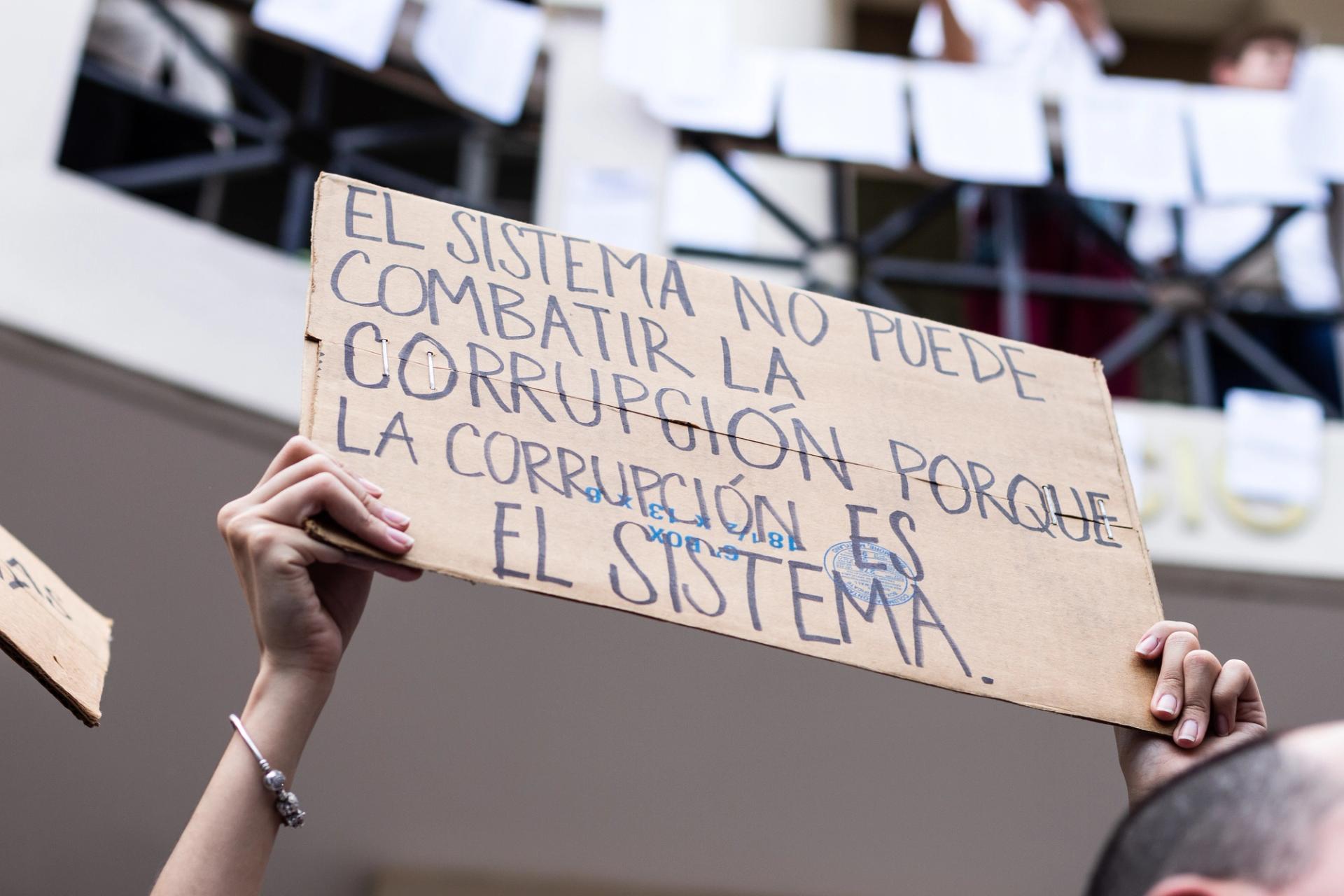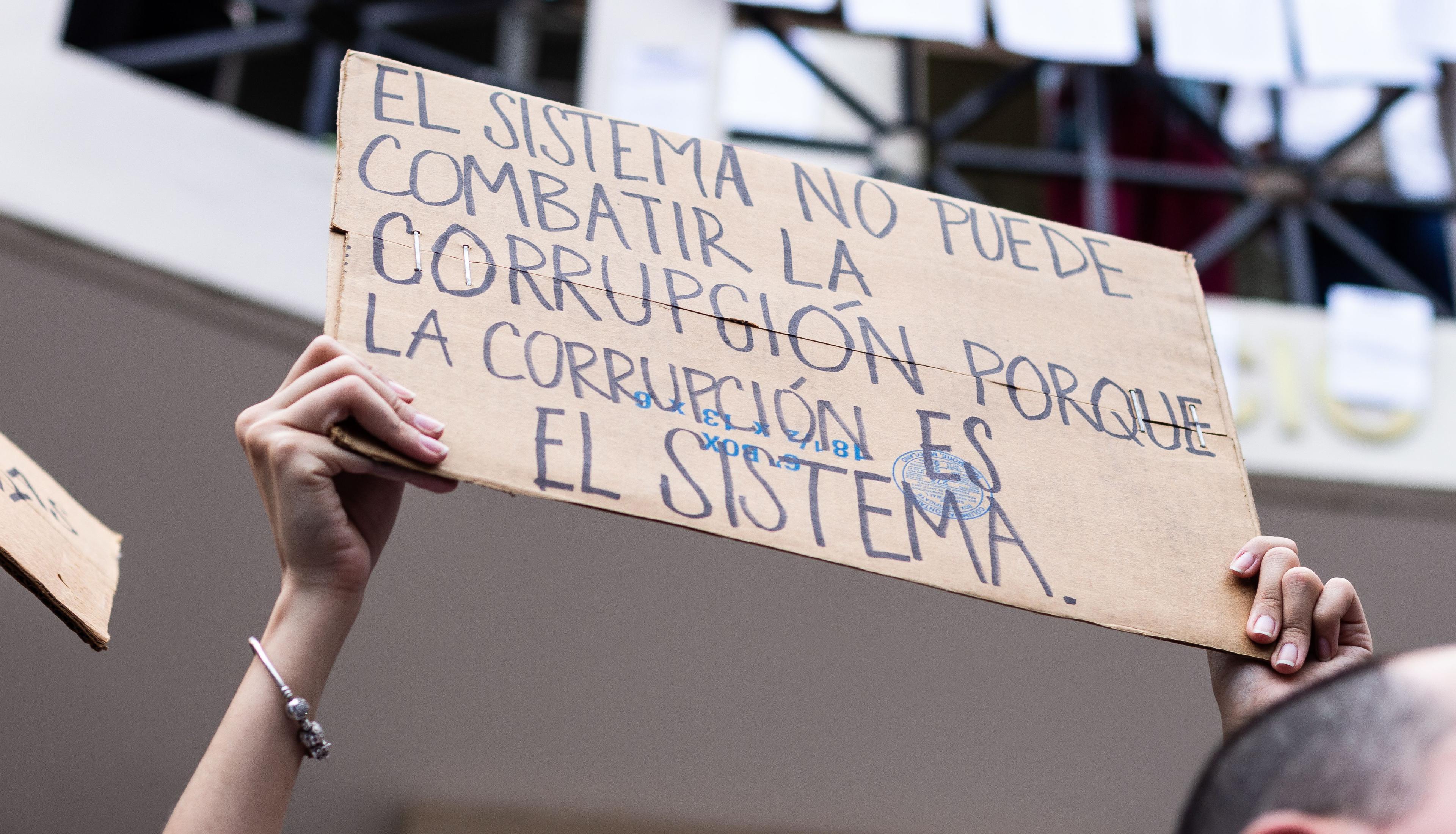Blog
When corruption is entrenched and systemic, more resilient anti-corruption can help

Sometimes corrupt actions are incidents, transactions or schemes – problematic enough – but when corruption becomes truly systemic, it endangers institutions, welfare and democracy. It also becomes resistant to the usual anti-corruption strategies. To tackle entrenched corruption, practitioners need targeted efforts, system-sensitive choices, and more emphasis on ‘social empowerment’.
Corrupt systems are hidden below the surface
When we read in the newspaper that, for example, a director of a hospital and local mayor have both been found with suitcases of cash embezzled from transfers from central government, we may be relieved that charges have been pressed against these two opportunist perpetrators. But what if these suitcases are the tip of a corruption iceberg, the majority of which remains deeply submerged – what if, in fact, this health sector corruption is symptomatic of an entrenched set up, involving a wide range of employees, from frontline carers to senior officials, all operating according to well-known ‘corruption operating procedures’ and guarded by political power?
We know from some recent empirical work (eg, from ACE Global Integrity, CDA Collaborative Learning Projects and the Carnegie Endowment for Internationl Peace) that the latter ‘corruption system’ scenario is not so far-fetched. A new U4 Issue (Building anti-corruption resilience to combat entrenched corruption systems) builds on this recent thinking to provide three further contributions for how to contend with corruption systems in sectoral work.
1. How to recognise a ‘corruption system’
First, I clarify precisely what ‘system’ means in the context of corruption, a term often used vaguely or, in fact, misleadingly to mean ‘a lot’ of corruption. A precise concept is especially important because corruption is not always part of a system – and understanding when it is and when it is not should shape policy design. Adapting a common definition of systems by Donella Meadows, a leading thinker on systemic perspectives for public policy problems, I argue that corruption is part of a system only when it is 1) perpetrated by networks that 2) act according to stable practices and norms (institutionalised), and that 3) serve political or social functions that emerge through design or dysfunction.
Table 1. Comparing corruption types by systemic elements
|
|
Networks |
Institutionalisation |
Political or social functions |
|
Transactional corruption |
Absent |
Possible |
Absent |
|
Corruption scandal |
Possible |
Absent |
Absent |
|
Corruption scheme |
Present |
Possible |
Absent |
|
Corruption system |
Present |
Present |
Present |
From this definition, we can start to differentiate between qualitatively different types of corruption, as we can see in Table 1. These boundaries are not rigid or fixed in time. Transactional corruption could become a scheme if, for example, a new senior manager who is part of a broader network starts to demand a cut. The scheme can then become a system – for example, when a politically affiliated union extracts fees in return for broad protection, and these corruption gains are then used to fund electoral campaigns or buy off accountability institutions.
2. How systems of corruption protect themselves against anti-corruption efforts
The U4 Issue also clarifies how, when corruption evolves into a system, it traps anti-corruption efforts into a double bind, raising the risks of implementation failure. The first constraint is that corruption systems tend to hollow out the very accountability mechanisms on which anti-corruption efforts depend. This is because, I propose, they operate according to a co-option–impunity–exploitation dynamic – see Figure 1. Systems seek strength through a greater number of participants (‘co-option’). As co-option increases, so do the incentives to protect the people within the system from scrutiny and formal oversight. Active efforts are made to seek impunity, often through corrupt means. Impunity creates further scope for other forms of exploitation – 'sextortion', violence and intimidation, organised crime and discrimination are all associated with corruption systems. Abuse leads to further institutional decay, lowering the capacity for effective and independent anti-corruption action.
Figure 1. The corruption system dynamic

Another constraint for anti-corruption results from networks within corruption systems always seeking to defend the system. Such ‘systemic resistance’ will often nullify conventional anti-corruption approaches, meaning that increasing oversight or transparency may do little to change the underlying power or practices of the system. Systemic resistance may also mean that typical anti-corruption reforms, even if they are successful in implementing measures against a specific practice, can result in corruption displacement rather than control.
3. Anti-corruption efforts need to focus on resilience
Though not all corruption is part of a system, if systemic elements are present then dealing with corruption systems (compared to ‘one off’ corruption) requires a more deliberate emphasis on building resilience into anti-corruption efforts. In the first instance, more resilient anti-corruption considers impact and efficiency, and prioritises corruption problems: dealing with the corruption that most constrains outcomes in a sector (like health or education).
Building resilience also means making better choices about anti-corruption design. This depends on generating sufficient and reliable information about the corruption system by scrutinising each of the constituent parts: the elements (the who), the interconnections (the how) and the functions (the why).
Finally, more emphasis needs to be placed on finding ways to challenge the deeper imbalances of power in sectors through what Michael Johnston has called ‘social empowerment’. Thinking through how this broad concept can be operationalised in sectoral approaches, the U4 Issue offers a strategy with two pillars. First, empowering collective action can lead to system change from the inside out. Coalitions can push for accountability constraints, create narratives for changes, and maintain constant vigilance to resist corruption systems fighting back.
Second, social empowerment means reducing co-option into corruption systems through tackling underlying fiscal, managerial, or institutional dysfunction so that people are less vulnerable and have more freedom to reject corruption fixes. Few anti-corruption approaches actively attempt to consider how broader sectoral dysfunction can be supportive to anti-corruption agendas; yet making specific plans to understand and address the broader dysfunction can indirectly help advance anti-corruption efforts.
Sensitivity to systems of corruption is a vital first step
To conclude, dominant policy responses in anti-corruption still generally reflect the notion that corrupt practices are opportunistic and one-off. Most corruption risk management tools, for example, encourage the listing of potential individual acts of corruption to estimate their frequency. Yet, such an approach may not be appropriate for anti-corruption work in sectors where corruption is entrenched. Being sensitive to how corruption operates as a system is one way to arrest the endless inheritance of dysfunction, capture, fraud and embezzlement we find in certain important areas of public life.
Disclaimer
All views in this text are the author(s)’, and may differ from the U4 partner agencies’ policies.
This work is licenced under a Creative Commons Attribution-NonCommercial-NoDerivatives 4.0 International licence (CC BY-NC-ND 4.0)


